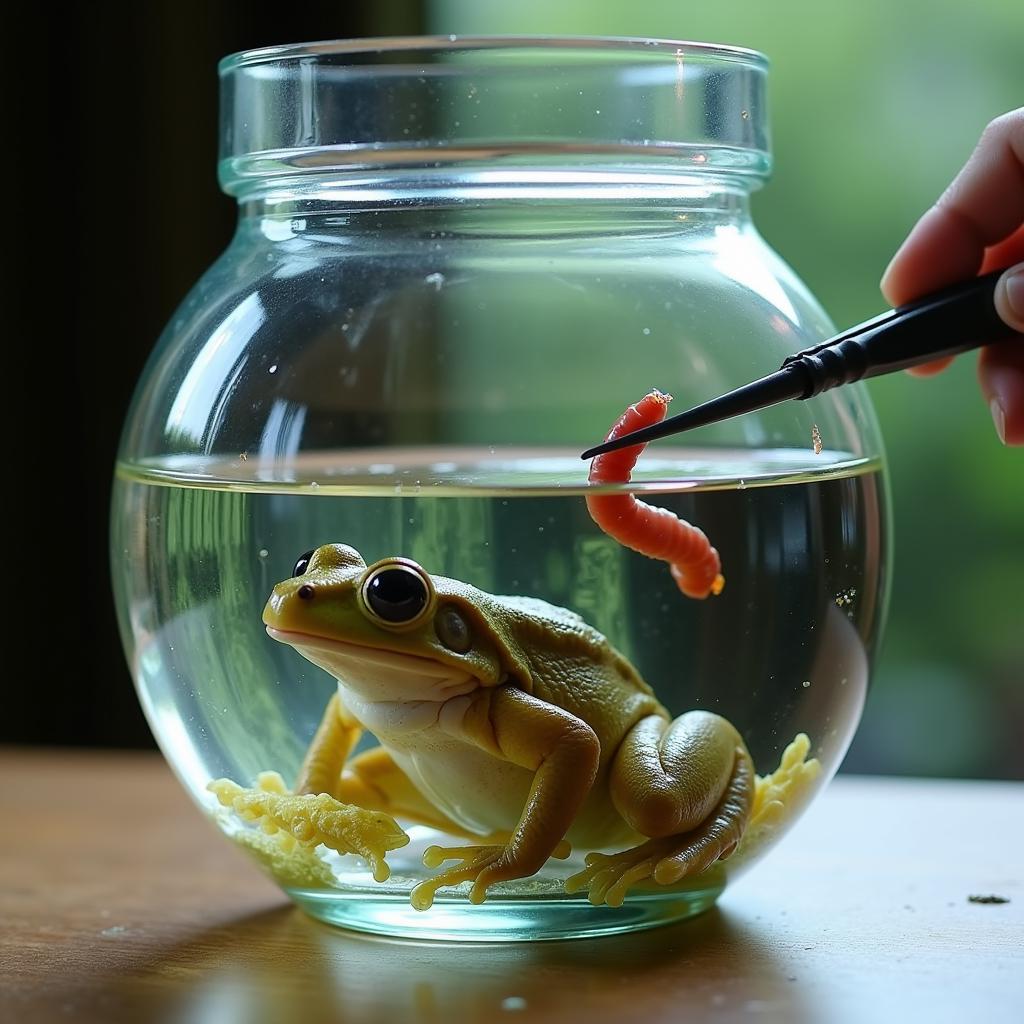Unveiling the African Bullfrog Tadpole: A Giant Among Its Kind
African Bullfrog Tadpoles are a fascinating subject, representing the juvenile stage of one of Africa’s largest and most imposing amphibians. These tadpoles, unlike their more delicate counterparts, are surprisingly large and robust, reflecting the impressive size of the adult bullfrog. They inhabit a range of aquatic environments across sub-Saharan Africa, showcasing a remarkable adaptability. We’ll delve into the intriguing world of these aquatic giants, exploring their development, diet, and the challenges they face in their journey to adulthood. You’ll discover why the African bullfrog tadpole stands out in the amphibian world.
The African bullfrog tadpole’s development is a rapid and dramatic transformation. Hatching from small, black eggs, they quickly grow into formidable aquatic predators. Their diet, primarily consisting of algae, insects, and even smaller tadpoles, fuels this rapid growth. Within a few months, these aquatic larvae undergo metamorphosis, transitioning into the terrestrial, air-breathing giants we recognize as African bullfrogs. This remarkable transformation is a testament to the adaptability and resilience of this species. Learn more about their growth stages at African bullfrog growth.
The Diet of an African Bullfrog Tadpole: A Voracious Appetite
These tadpoles are known for their voracious appetites, consuming vast quantities of food to fuel their rapid growth. Their diet primarily consists of algae, which they scrape off rocks and submerged vegetation. However, they are also opportunistic carnivores, readily consuming insects, small crustaceans, and even other tadpoles. This diverse diet contributes to their rapid development, enabling them to reach impressive sizes before metamorphosis. What does an adult African bullfrog eat? Find out more about their intriguing dietary habits by exploring African bullfrog eating chick.
From Tadpole to Giant: The Metamorphosis of the African Bullfrog
The metamorphosis of the African bullfrog tadpole is a remarkable transformation, marking a shift from an aquatic to a terrestrial lifestyle. This complex process involves the development of lungs, the resorption of the tail, and the emergence of limbs. This transformation, often occurring within a few months, is triggered by hormonal changes within the tadpole. The final result is the imposing adult African bullfrog, a creature perfectly adapted to its terrestrial habitat. Curious about the African bullfrog’s scientific classification? Check out African bullfrog scientific name.
The Challenges Faced by African Bullfrog Tadpoles
Life as an African bullfrog tadpole is fraught with challenges. Predation is a constant threat, with birds, fish, and larger amphibians all preying on these vulnerable youngsters. Fluctuations in water levels and quality also pose significant risks, as do diseases and parasites. Despite these challenges, the African bullfrog tadpole demonstrates remarkable resilience, with a significant percentage surviving to adulthood. You can discover more about their natural environment at African bullfrog habitat.
Fascinating Facts about African Bullfrogs
African bullfrogs, even in their tadpole stage, are fascinating creatures. Their size, diet, and rapid development set them apart from other amphibians. Did you know that these tadpoles can reach lengths of up to six inches? Their aggressive nature, even cannibalizing their own kind, is a testament to their drive to survive. Learn even more fascinating insights about these incredible creatures at African bullfrog facts.
In conclusion, the African bullfrog tadpole, with its impressive size, voracious appetite, and remarkable transformation, offers a captivating glimpse into the amphibian world. From its humble beginnings as a tiny, black egg to its emergence as a terrestrial giant, the African bullfrog tadpole’s journey is a testament to the power of adaptation and survival.
FAQ
- What do African bullfrog tadpoles eat? They primarily eat algae, insects, and even other tadpoles.
- How big do African bullfrog tadpoles get? They can reach lengths of up to six inches.
- How long does it take for an African bullfrog tadpole to metamorphose? It usually takes a few months.
- What are the main predators of African bullfrog tadpoles? Birds, fish, and larger amphibians are their primary predators.
- Where are African bullfrog tadpoles found? They are found in various aquatic environments across sub-Saharan Africa.
- Are African bullfrog tadpoles cannibalistic? Yes, they can be cannibalistic, especially in overcrowded conditions.
- What are some of the challenges faced by African bullfrog tadpoles? Predation, fluctuating water levels, diseases, and parasites are some of the challenges they face.
For further assistance, please contact us at Phone Number: +255768904061, Email: [email protected], or visit us at Mbarali DC Mawindi, Kangaga, Tanzania. Our customer service team is available 24/7.


